16-9. Let's now fill in information
about stars which
were visible close to the Full Moon in late November at the tme when the
Sun was late in May, as counted from Alcyone (*56 = *238 - *182).
 |
 |
|
Ea1-1 |
Eb7-2
(548 → 1½ * 365.25) |
|
VISIBLE CLOSE
TO THE FULL MOON: |
|
ALCYONE (*56)
May
16 (136 = 80 + 56) |
November 14 (*238) |
|
INVISIBLY CLOSE TO THE SUN: |
|
November 14 (136 + 182 = 318) |
ALCYONE (*56 = *238 - *182)
May
16 (136 = 80 + 56) |
|
136
+ 318 = 454 = 12 * 29½ + 100
...Then the big
Fish did swallow him, and he had
done acts worthy of blame.
Had it not been that he (repented
and) glorified Allah, He would
certainly have remained inside the
Fish till the Day of Resurrection. -
Qur'an, chapter 37 (As-Saaffat),
verse 139–144.
But We cast him forth on the naked
shore in a state of sickness,
And We caused to
grow, over him, a spreading plant of
the gourd kind.
And We sent him (on a mission) to a
hundred thousand (men) or more.
And they believed; so We permitted
them to enjoy (their life) for a
while. - Qur'an, chapter 37
(As-Saaffat), verse 145–148 ...
 |
 |
 |
|
Eb7-1
(→ 237 - 16) |
Eb7-2
(326 + 222 = 548 = 2 * 274) |
|
te tagata puo pouo |
kua hua te hipu |
|
Puo.
(Also pu'a); pu'o nua,
one who covers himself with a nua
(blanket), that is to say, a human
being. Vanaga. 1. To dress, to clothe,
to dress the hair; puoa, clothed;
puoa tahaga, always dressed. 2.
To daub, to besmear (cf. pua 2);
puo ei oone, to daub with dirt,
to smear. 3. Ata puo, to hill up
a plant. Churchill. Hipu. Calabash,
shell, cup, jug, goblet, pot, plate,
vase, bowl, any such receptacle; hipu
hiva, melon, bottle; hipu
takatore, vessel; hipu unuvai,
drinking glass. P Mgv.: ipu,
calabash, gourd for carrying liquids.
Mq.: ipu, all sorts of small
vases, shell, bowl, receptacle, coconut
shell. Ta.: ipu, calabash, cup,
receptacle. Churchill.
 |
|
INVISIBLY CLOSE TO THE SUN: |
|
May 15 (365 + 135 = 500) |
May 16
(136 = 80 + 56) |
|
Al Thurayya-27 (Many Little Ones)
/
Krittikā-3 (Nurses of Kārttikeya)
/
TAU-ONO (Six
Stones)
ATIKS =
ο
Persei,
RANA (Frog) =
δ
Eridani
(55.1),
CELAENO (16 Tauri), ELECTRA (17),
TAYGETA (19),
ν
Persei (55.3), MAIA (20), ASTEROPE (21),
MEROPE (23)
(55.6) |
Hairy Head-18 (Cockerel)
/
Temennu-3
(Foundation Stone)
ALCYONE
(56.1),
PLEIONE (28 Tauri), ATLAS (27 Tauri)
(56.3) |
|
→ VISIBLE CLOSE
TO THE FULL MOON: |
|
κ
Librae (237.2),
ι
Serpentis (237.4),
ψ²
Lupi,
ρ
Oct.
(237.5), γ Cor. Borealis, η Librae (237.7), COR
SERPENTIS = α Serpentis
(237.9)
*196.0 = *237.4 - *41.4
Nov
13 (317, *237) |
π
Cor. Borealis,
UNUK ELHAIA (Necks of the Serpents) =
λ
Serpentis
(238.1),
CHOW =
β
Serpentis
(238.6)
Nov 14
(364 - 46 = 318) |
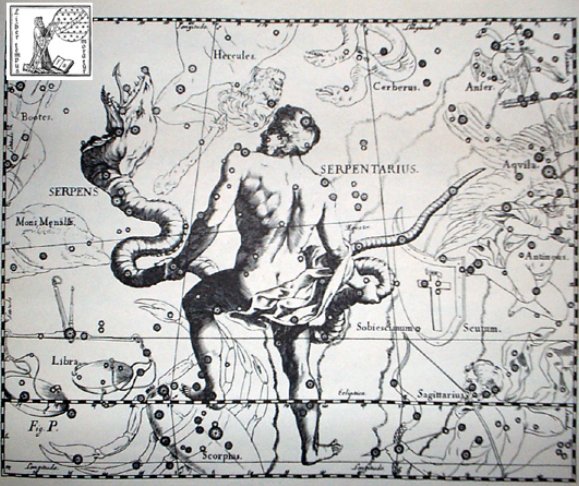 |
 |
 |
|
Eb7-3 |
Eb7-4 (326 + 224 = 550) |
|
ka tu te rakau |
te vai okahega |
|
Oka. 1. Lever, pole; to dig holes in
the ground with a sharpened stick, as was done
in ancient times to plant vegetables; used
generally in the meaning of making plantations.
2. The four sideways poles supporting a hare
paega. Okaoka, to jab, to pierce, to
prick repeatedly. Vanaga. Digging stick, stake,
joist; to prick, to pierce, to stick a thing
into, to drive into, to slaughter, to
assassinate; kona oka kai, plantation;
pahu oka, a drawer. Okaoka, a fork,
to prick, to dig. Okahia, to prick.
Churchill.
Hega. Hegahega, reddish,
ruddy. Hehega, to dawn; ki hehega mai
te raá, when the sun rises. Vanaga.
Hehegaraa, sunrise. PS Sa.: sesega,
to be dazzled as by the sun. Fu.: sega,
the beginning of daybreak. Niuē:
hegahega,
the red light or rays at sunset. Viti:
sesē, to
dawn. Churchill. |
|
INVISIBLY
CLOSE TO THE SUN: |
|
May 17 |
18 (74 + 64 = 138) |
|
MARCH 14
(3-14 →π) |
15 (365 / 5 +
1) |
|
MENKHIB (Next to the Pleiades) =
ζ
Persei(57.6)
PORRIMA (γ Virginis) |
ZAURAK (Boat) = γ Eridani
(58.9) |
 |
|
→ VISIBLE CLOSE
TO THE FULL MOON: |
|
κ
Serpentis (239.3),
δ
Cor. Borealis,
TIĀNRŪ =
μ
Serpentis
(239.5),
χ
Lupi, (239.6),
ω
Serpentis (239.7),
BA (= Pa) =
ε
Serpentis,
χ
Herculis (239.8).
κ
Cor.
Borealis, ρ Serpentis (239.9)
Nov 15 |
λ
Librae (240.0),
β
Tr. Austr. (240.3),
κ
Tr. Austr. (240.4),
ρ
Scorpii (240.8)
*199.0 = *240.4 - *41.4
Nov
16 (320) |
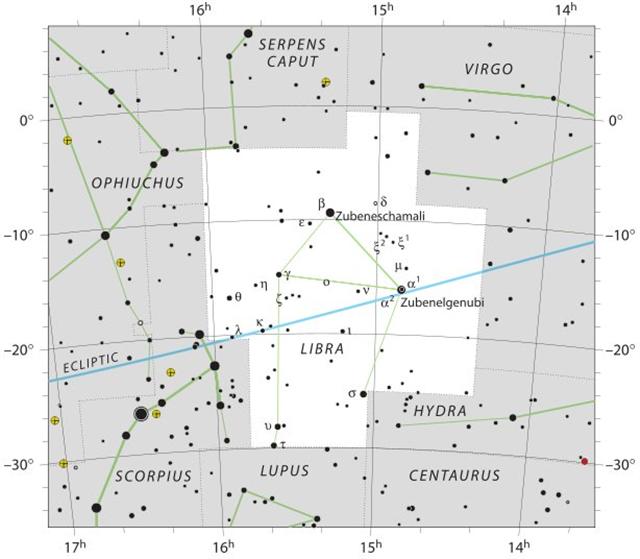 |
Here my colours for the numbers of the
planets agrees with the colours for both
the ordinal numbers of the glyphs in the
line (e.g. the green of Friday and Venus
for Eb7-3) and also with the ordinal numbers for
the days in May (e.g. 17 = 3 + 14).
|
number of glyphs and planets |
|
Venus |
Saturn |
Sun |
Moon |
Mars |
Mercury |
Jupiter |
|
|
|
|
|
|
1 |
2 |
|
3 |
4 |
5 |
6 |
7 |
8 |
9 |
|
10 |
11 |
12 |
13 |
14 |
15 |
16 |
|
17 |
18 |
19 |
20 |
21 |
22 |
23 |
|
24 |
25 |
26 |
27 |
28 |
29 |
30 |
|
31 |
32 |
33 |
34 |
35 |
36 |
37 |
|
38 |
39 |
40 |
41 |
42 |
43 |
44 |
|
45 |
46 |
47 |
48 |
49 |
50 |
51 |
|
52 |
53 |
54 |
55 |
56 |
57 |
58 |
|
59 |
60 |
61 |
62 |
63 |
64 |
65 |
|
66 |
67 |
68 |
69 |
70 |
71 |
|
Eb7-5 and Eb7-7 have been drawn as twins:
 |
 |
|
Eb7-5 (225 →
day 225 = Aug 13) |
Eb7-6 |
... In three magnificent
texts at the site of Koba, scribes
recorded it as one of the largest finite
numbers we humans have ever written.
According to these inscriptions, our world
was created on the day 4 Ahaw 8 Kumk'u.
On this day all the cycles of the Maya
calendar above twenty years were set at
thirteen - that is to say, the cycles of 400
years, 8,000 years, 160,000 years,
32,000,000 years, and so on, all the way up
to a cycle number extending to twenty places
(2021 * 1360-day year).
In
our calendar, this day fell on August 13,
3114 BC ...
|
|
te rakau |
te manu |
|
INVISIBLY
CLOSE TO THE SUN: |
|
May 19 |
20 |
|
λ Tauri (59.3), ν Tauri (59.9) |
4h (60.9)
JĪSHUĬ = λ Persei (60.7)
COR CAROLI (α Canum Ven.) |
|
→ VISIBLE CLOSE
TO THE FULL MOON: |
|
Iklīl al Jabhah-15 (Crown of the Forehead)
/
Anuradha-17 (Following Rādhā)
/
Room-4 (Hare)
ξ
Lupi,
λ Cor. Bor.(241.1),
ZHENG =
γ
Serpentis,
θ Librae (241.2),
VRISCHIKA =
π
Scorpii
(241.3),
ε
Cor.
Borealis (241.5),
DSCHUBBA
(Front of Forehead) = δ Scorpii
(241.7), η Lupi (241.9)
Nov 17 (321) |
υ
Herculis (242.3),
ρ
Cor. Borealis (242.4),
ι
Cor. Borealis (242.5),
θ
Draconis (242.6),
ξ
Scorpii (242.7)
SCHEDIR
(Breast) α Cassiopeiae
*201.0 = *242.4 - *41.4
Nov 18 |
|
... In other words, the ancient Druidic religion
based on the oak-cult will be swept away by
Christianity and the door - the god Llyr - will
languish forgotten in the Castle of Arianrhod,
the Corona Borealis. This helps us to
understand the relationship at Rome of Janus and
the White Goddess Cardea who is ... the Goddess
of Hinges who came to Rome from Alba Longa. She
was the hinge on which the year swung - the
ancient Latin, not the Etruscan year - and her
importance as such is recorded in the Latin
adjective cardinalis - as we say in
English 'of cardinal importance - which was also
applied to the four main winds; for winds were
considered as under the sole direction of the
Great Goddess until Classical times ... |
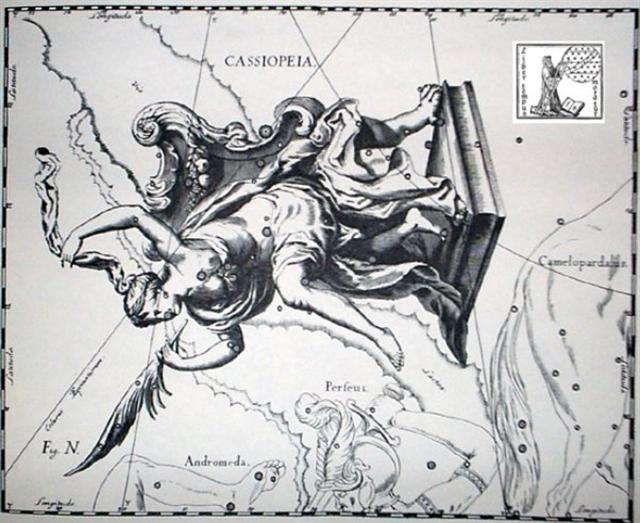 |
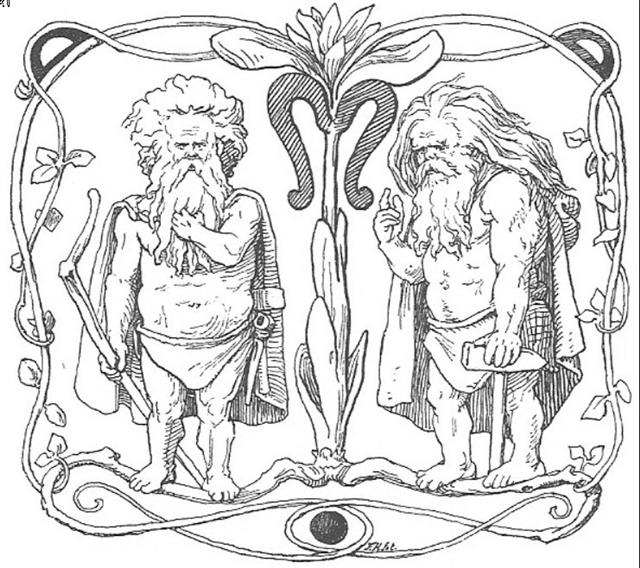
 |
 |
|
Eb7-7 (227 →
22 / 7 = π) |
Eb7-8 |
|
... About Carmenta we know from the historian
Dionysus Periergetis that she gave orcales to
Hercules and lived to the age of 110 years. 110
was a canonical number, the ideal age which
every Egyptian wished to reach and the age at
which, for example, the patriarch Joseph died.
The 110 years were made up of twenty-two
Etruscan lustra of five years each; and
110 years composed the 'cycle' taken over from
the Etruscans by the Romans. At the end of each
cycle they corrected irregularities in the solar
calendar by intercalation and held Secular
Games. The secret sense of 22 - sacred numbers
were never chosen haphazardly - is that it is
the measure of the circumference of the circle
when the diameter is 7. This proportion, now
known as pi, is no longer a religious
secret; and is used today only as a
rule-of-thumb formula, the real mathematical
value of pi being a decimal figure which
nobody has yet been able work out because it
goes on without ever ending, as 22 / 7 does, in
a neat recurring sequence [3.142857142857 ...].
Seven lustra add up to thirty-five years, and
thirty-five at Rome was the age at which a man
was held to reach his prime and might be elected
Consul. (The same age was fixed upon by a
Classically-minded Convention as the earliest at
which an American might be elected President of
the United States.)
... |
|
tupu te rakau |
ko raua ka tutu |
|
Ma.: The deity Rongo: Ka ki
atu a Tu raua ko Roko ki a Rehua. |
|
INVISIBLY
CLOSE TO THE SUN: |
|
May 21 (141) |
22 |
|
υ
Persei (61.2) |
BEID (Egg) =
ο¹
Eridani
(62.2),
μ
Persei (62.8)
VINDEMIATRIX (ε Virginis) |
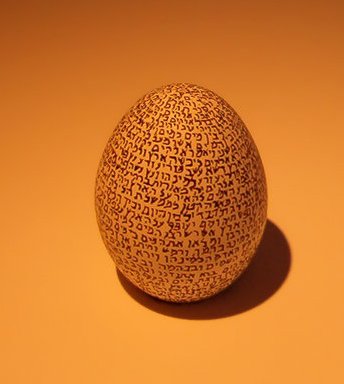 |
|
→ VISIBLE
CLOSE TO THE FULL MOON: |
|
16h (243.5)
ACRAB (Scorpion) = β Scorpii,
JABHAT AL ACRAB (Forehead of the Scorpion) = ω
Scorpii
(243.3), θ Lupi,
RUTILICUS = β Herculis
(243.5),
MARFIK (Elbow) = κ Herculis
(243.7), φ Herculis (243.8
Nov
19
SEPT 16 |
ψ
Scorpii (244.6),
LESATH (Sting) =
ν
Scorpii
(244.8)
Nov
20 (324 = 260 + 64)
SEPT 17
(260) |
 |
Here there seems to be a Sign of number 71
→ 355 (December solstice) /
5:
|
 |
*71
|
 |
|
kua tu te Ao |
ka tu te niu |
|
Eb5-10
|
Eb7-10 |
|
March 14
(3-14 = π |
May 24 (73 +
71 = 144) |
|
26000 / 71 =
366 |
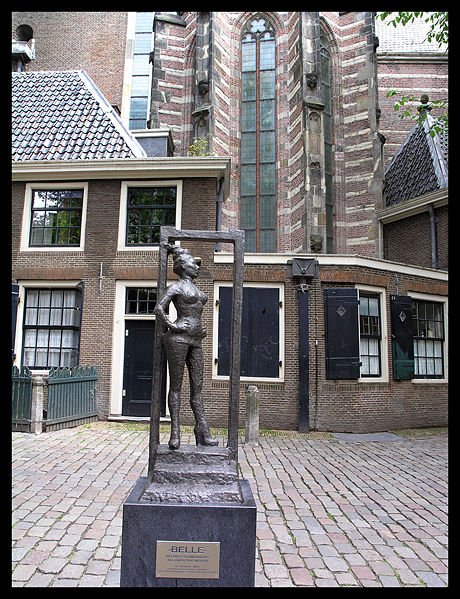
 |
 |
|
Eb7-9 (229 →
314 * 1½ - 11 * 22) |
Eb7-10 (159 +
71 = 230) |
|
ka tupu te rakau |
ka tu te niu |
|
Niu. Palm tree, coconut tree; hua
niu, coconut. Vanaga. Coconut, palm,
spinning top. P Pau., Ta.:
niu,
coconut. Mgv.:
niu, a top;
niu mea,
coconut. Mq.:
niu, coconut, a top. Churchill. The
fruit of miro.
Buck. T. 1. Coconut palm. 2. Sign for peace.
Henry. The sense of top lies in the fact that
the bud end of a coconut shell is used for
spinning, both in the sport of children and as a
means of applying to island life the practical
side of the doctrine of chances. Thus it may be
that in New Zealand, in latitudes higher than
are grateful to the coconut, the divination
sense has persisted even to different implements
whereby the arbitrament of fate may be declared.
Churchill 2. |
|
INVISIBLY
CLOSE TO THE SUN: |
|
May 23 |
24 (12 * 12 =
73 + 71) |
|
MARCH 20 |
21 (144 - 64
= 80) |
|
... Ecclesiastically, the equinox is reckoned to
be on 21 March (even though the equinox occurs,
astronomically speaking, on 20 March in most
years) ... |
|
Al
Dabarān-2 (The Follower)
HYADUM I =
γ
Tauri (63.4)
*22.0 = *63.4 - *41.4 |
HYADUM II = δ¹ Tauri
(64.2) |
 |
|
→ VISIBLE
CLOSE TO THE FULL MOON: |
|
χ
Scorpii (245.1),
YED PRIOR (Hand in Front) =
δ
Ophiuchi,
δ
Tr.
Austr. (245.5)
Nov 21 (229 +
96 = 325) |
YED POSTERIOR (Hand Behind) =
ε
Ophiuchi,
RUKBALGETHI SHEMALI (Northern Knee of the Giant)
=
τ
Herculis
(246.6).
δ
Apodis (246.7),
ο
Scorpii (246.8)
Nov 22 (326 →
glyphs on side a) |
 |
... There was no
water in the village. The lakes and
rivers were dry. Raven and Crow, two
young girls who were having their first
menstrual courses, were told to go and
draw water from the ocean. Finding the
journey too long, Raven decided just to
urinate into her basket-bucket. She
decieved no one and was severly scolded.
Crow returned much later but with
drinking water. As a punishment, Raven
was condemned never to find water in the
summer; only in winter would she find
something to drink. For that reason the
Raven never drinks during the hot
months; she speaks with a raucous voice
because of her dry throat ...
 |
 |
|
Eb7-11 |
Eb7-12 (558 → 18
* 31) |
|
kua hua |
atua mata viri |
|
Viri.
1. To wind, to coil, to roll up; he
viri i te hau, to wind, coil a string (to fasten
something). 2. To fall from a height, rolling over,
to hurl down, to fling down. Viriviri, round,
spherical (said of small objects). Viviri
te henua, to feel dizzy (also: mimiro te
henua). Vanaga. To turn in a circle, to clew up,
to groom, to twist, to dive from a height, to roll (kaviri).
Hakaviri, crank, to groom, to turn a wheel,
to revolve, to screw, to beat down; kahu hakaviri,
shroud. Viriga, rolling, danger. Viriviri,
ball, round, oval, bridge, roll, summit, shroud, to
twist, to wheel round, to wallow. Hakaviriviri,
to roll, to round; rima hakaviriviri, stroke
of the flat, fisticuff. P Pau.: viriviri, to
brail, to clew up; koviriviri, twisting.
Mgv.: viri, to roll, to turn, to twist;
viviri, to fall to the ground again and again in
a fight. Mq.: vii, to slide, to roll, to fall
and roll. Ta.: viri, to roll up, to clew up.
Viritopa, danger. Mgv.: Viripogi, eyes
heavy with sleep. Mq.: viipoki, swooning,
vertigo. Churchill. Viti: vili, to pick up
fallen fruit or leaves ... In Viti virimbai
has the meaning of putting up a fence (mbai
fence); viri does not appear independently in
this use, but it is undoubtedly homogenetic with
Samoan vili, which has a basic meaning of
going around; virikoro then signifies the
ring-fence-that-goes-about, sc. the moon. In the
Maori, aokoro is the cloud-fence ...
Churchill 2. |
|
INVISIBLY CLOSE
TO THE SUN: |
|
May 25 (145) |
26 (2 * 73) |
|
Net-19 (Crow)
AIN (Eye) =
ε
Tauri,
θ¹
Tauri,
θ²
Tauri (65.7) |
No star listed (66) |
|
→ VISIBLE CLOSE
TO THE FULL MOON: |
|
Heart-5 (Fox)
σ Scorpii (247.0),
HEJIAN =
γ
Herculis
(247.2),
ψ
Ophiuchi (247.7)
Nov 23 (327) |
ρ
Ophiuchi (248.1),
KAJAM (Club) =
ω
Herculis
(248.3),
χ
Ophiuchi (248.5),
SHE LOW (Market Tower) =
υ
Ophiuchi,
Tr.
Austr. (248.7), ζ Tr. Austr. (248.8)
Nov 24 (8 * 41) |
 |
... Proclus informs us that the fox star
nibbles continuously at the thong of the yoke which holds
together heaven and earth; German folklore adds that when
the fox succeeds, the world will come to its end. This fox
star is no other than Alcor, the small star g near
zeta Ursae Majoris (in India Arundati, the common
wife of the Seven Rishis, alpha-eta Ursae ...
 |
 |
|
Eb7-13 |
Eb7-14 (326 +
234 = 560) |
|
Erua oona mea ki te puoko |
ka tupu te rakau |
|
Rakau, raau, medicine, remedy, drug.
Ra'a'u, scratch on the skin. Rakau, a
plant. Râkau, goods, property. Vanaga. 1.
Wood; rakau ta, cudgel, stick. P Pau.:
rakau, tree, to dress a wound. Mgv.:
rakau, wood, timber, a tree; medicine, a
remedy; an object. Mq.: ákau, wood, tree.
Ta.: raáu, id. 2. Medicine, remedy,
potion, ointment, furniture, any precious
object, resources, baggage, riches, heritage,
dowry, merchandise, treasure, wealth; rakau
hakaneinei, purgative; rakau nui,
rich, opulent; rakau kore, poor, beggar,
indigent, miserable, an inferior;
hakakamikami ki te rakau, to impoverish;
rakau o te miro, ballast. Mq.: akau,
anything in general. The medicine sense is
particularized in Tonga, Nukuoro, Hawaii,
Tahiti, Mangareva, Paumotu. In no other speech
does wood stand so fully for wealth of
possessions, but it will be recalled that
Rapanui is destitute of timber and depends
wholly upon driftwood. Churchill. |
|
INVISIBLY
CLOSE TO THE SUN: |
|
May 27 |
May 28 (148) |
|
No star listed (67) |
Rohini-4 (The Red One)
/
Pidnu-sha-Shame-4 (Furrow of Heaven)
/
ANA-MURI-2 (Rear pillar - at the foot of which
was the place for tattooing)
ALDEBARAN = α Tauri
(68.2),
THEEMIN = υ² Eridani
(68.5) |
|
→ VISIBLE
CLOSE TO THE FULL MOON: |
|
Al Kalb-16 (The Heart)
/
Jyeshtha-18 (Eldest)
/
ANA-MUA-1 (Entrance
pillar)
ANTARES =
α
Scorpii
(249.1),
MARFIK (Elbow) =
λ
Ophiuchi,
φ
Ophiuchi (249.5), ω
Ophiuchi (249.8)
Nov 25 (329, *249 = *67 + *182) |
γ
Apodis (250.1),
σ
Herculis (250.3),
θ
Tr.
Austr. (250.6), τ Scorpii (250.7)
Nov 26 (148 + 182
= 330) |
... In the inscriptions of Dendera,
published by Dümichen, the goddess Hathor is called
'lady of every joy'. For once, Dümichen adds: Literally ...
'the lady of every heart circuit'.
This is not to say that the Egyptians had discovered the
circulation of the blood. But the determinative sign for
'heart' often figures as the plumb bob at the end of a plumb
line coming from a well-known astronomical or surveying
device, the merkhet. Evidently, 'heart' is something
very specific, as it were the 'center of gravity' ... See
Aeg.Wb. 2, pp. 55f. for sign of the heart (ib) as
expressing generally 'the middle, the center'. And this may
lead in quite another direction. The Arabs preserved a name
for Canopus - besides calling the star Kalb at-tai-man
('heart of the south') ... Suhail el-wezn, 'Canopus
Ponderosus', the heavy-weighing Canopus, a name promptly
declared meaningless by the experts, but which could well
have belonged to an archaic system in which Canopus was the
weight at the end of the plumb line, as befitted its
important position as a heavy star at the South Pole of the
'waters below'. Here is a chain of inferences which might or
might not be valid, but it is allowable to test it, and no
inference at all would come from the 'lady of every joy'.
The line seems to state that Hathor (= Hat
Hor, 'House of Horus') 'rules' the revolution of a
specific celestial body - whether or not Canopus is alluded
to - or, if we can trust the translation 'every', the
revolution of all celestial bodies. As concerns the identity
of the ruling lady, the greater possibility speaks for
Sirius, but Venus cannot be excluded; in Mexico, too, Venus
is called 'heart of the earth'. The reader is invited to
imagine for himself what many thousands of such
pseudo-primitive or poetic interpretations must lead to: a
disfigured interpretation of Egyptian intellectual life
...

|















